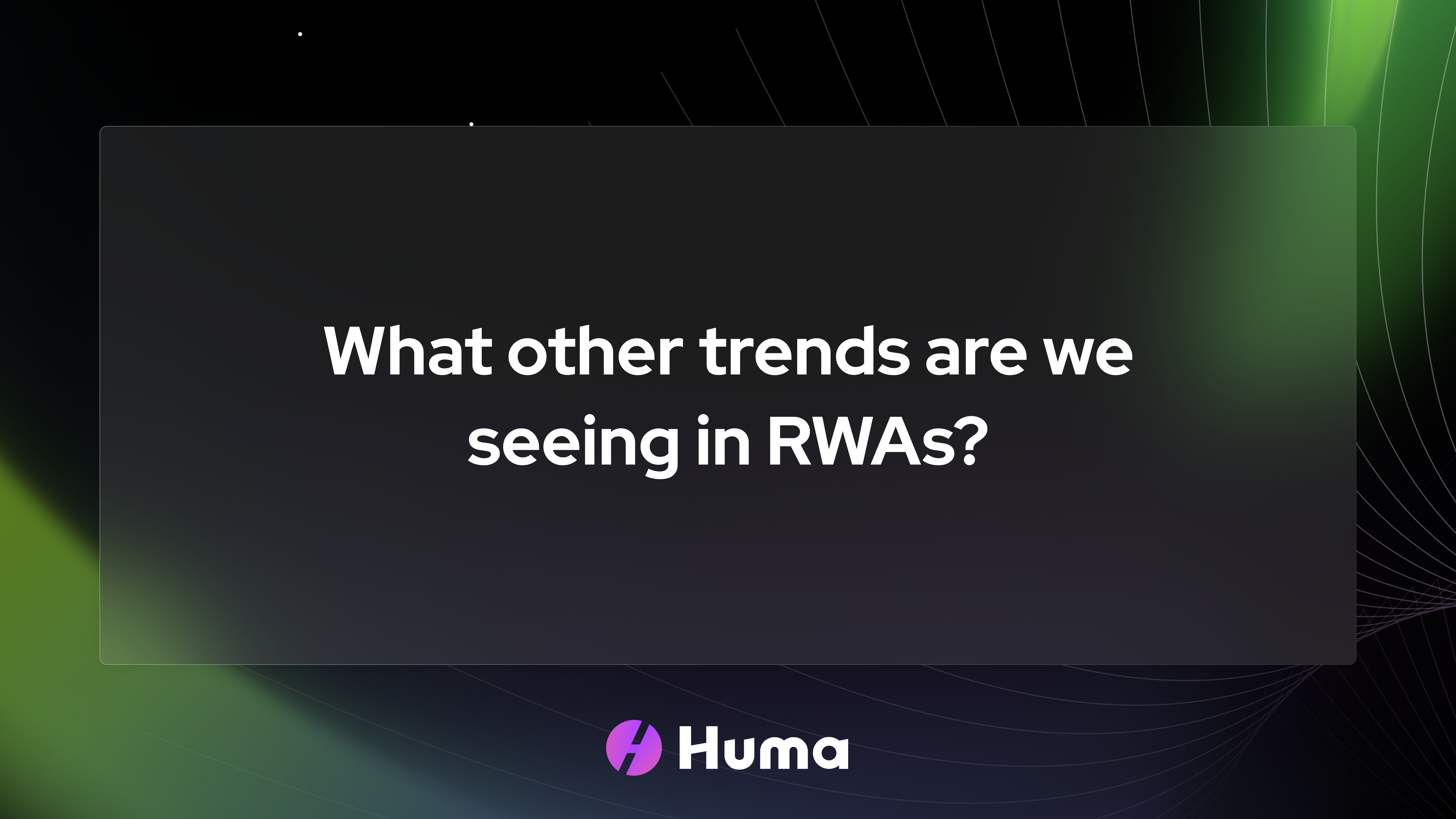When exploring real world assets (RWAs), several key trends and developments are worth noting right now.
1. Expansion into new asset classes
- Tokenization of new assets: Beyond real estate, commodities, and supply chain financing, there’s growing interest in tokenizing other asset classes like intellectual property, carbon credits, and fine art. These assets are seen as untapped opportunities for bringing additional value and liquidity into DeFi.
- Growing popularity of NFTs: Not so dead yet — Non-fungible tokens (NFTs) are increasingly being used to represent ownership of RWAs. This trend is particularly strong in the art and collectibles markets, where provenance and authenticity are crucial.
2. Institutional adoption
- Financial institutions entering the space: Major financial institutions are exploring RWA tokenization to enhance liquidity, reduce transaction costs, and improve access to global markets. For example, JPMorgan and other banks have started pilot projects involving RWA tokenization.
- Regulatory developments: As institutional interest grows, so does the need for clear regulatory frameworks. This includes creating standardized legal agreements for tokenized assets, which can help streamline transactions and boost investor confidence.
3. Integration with traditional finance
- Hybrid finance models: There’s a rise in hybrid finance (HyFi) models that combine elements of traditional finance (TradFi) with DeFi. These models leverage RWAs to offer more stable and diversified investment products.
- Cross-chain solutions: To maximize the liquidity and accessibility of RWAs, there’s ongoing development of cross-chain solutions. These enable RWAs to be used across multiple blockchain networks, enhancing their utility and market reach.
4. Increased focus on transparency and security
- Oracles and data providers: Reliable pricing and data feeds (oracles) are crucial for the success of RWAs in DeFi. Companies like Chainlink are expanding their services to include more accurate and transparent data for RWAs, helping reduce the risks associated with asset tokenization.
- Security enhancements: As RWAs grow in popularity, there’s an increasing focus on security measures. This includes developing smart contracts that are less prone to exploits and using insurance products to protect against potential losses.
5. Challenges with liquidity and valuation
- Liquidity issues: While tokenization offers new liquidity avenues, RWAs often face challenges related to their inherent illiquidity in traditional markets. This can affect their performance in DeFi, especially during periods of market stress.
- Valuation concerns: Accurately valuing RWAs remains a significant challenge. Unlike purely digital assets, RWAs require robust valuation methodologies that consider factors like market conditions, legal ownership, and the condition of the physical asset.
6. Emerging markets and global impact
- Impact on emerging markets: RWAs have the potential to provide significant financial inclusion benefits in emerging markets. By tokenizing assets like land or agricultural produce, local businesses can access global capital markets, improving economic outcomes.
- Global standardization efforts: There’s an ongoing effort to standardize how RWAs are tokenized and traded globally. Organizations like the World Economic Forum and the International Token Standardization Association are working on frameworks that could facilitate broader adoption and interoperability.
These trends highlight the dynamic and evolving nature of RWAs in DeFi. Keeping an eye on these developments can help you understand the potential opportunities and challenges as RWAs continue to gain traction in the financial world.
